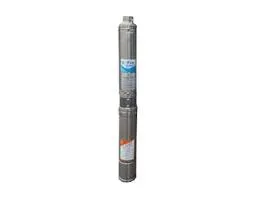Nov . 18, 2024 12:44 Back to list
submersible pump not lifting water
Understanding Why a Submersible Pump May Not Be Lifting Water
Submersible pumps are essential for various applications, from draining flooded basements to irrigation in agriculture. These pumps are designed to operate underwater, utilizing a sealed motor to push water to the surface. However, there are instances when a submersible pump fails to lift water, which can be frustrating and troublesome. Understanding the potential reasons behind this malfunction can help in diagnosing the problem and implementing effective solutions.
1. Electrical Issues
One of the primary reasons a submersible pump may not be lifting water is due to electrical issues. If the pump is not receiving adequate power, it may fail to operate effectively. Check the power source to ensure that the pump is plugged in properly and that there are no blown fuses or tripped breakers. It’s also essential to inspect the power cord for any signs of damage, such as fraying or cuts, as this can prevent the pump from functioning.
2. Overheating
Submersible pumps can overheat if they run for too long without adequate cooling or if they are operated in shallow water. Running a pump that isn't fully submerged can lead to motor failure, causing the pump to stop lifting water. Ensure that the pump is submerged to the appropriate level, as specified by the manufacturer, to prevent overheating and potential damage.
3. Clogged Impeller or Filter
Debris can accumulate in the submersible pump, particularly in the impeller or filter, obstructing water flow. A clogged impeller can prevent the pump from generating the necessary pressure to lift water effectively. Regular maintenance is crucial; inspect the pump for any foreign objects, sand, or sediment buildup, and clean it accordingly.
submersible pump not lifting water

Like any mechanical device, submersible pumps can wear out over time. If your pump has been in use for several years, it may have reached the end of its lifespan. Inspections can help identify signs of wear, such as rust, cracks, or a malfunctioning impeller. If you notice significant damage, it may be time to replace the pump entirely to restore functionality.
5. Incorrect Installation
Another reason a submersible pump might not lift water is incorrect installation. If the pump is positioned incorrectly, it might not reach the required water level or could be installed at an angle that impedes water flow. Consulting the installation manual and ensuring all specifications are met is critical for optimal operation.
6. High Water Levels or Low Flow
In some cases, external factors such as unusually high water levels or low flow conditions can affect the pump's ability to lift water. If the surrounding water is below the pump's operational range or is too deep, the pump might struggle to generate sufficient lifting power. Monitoring groundwater levels and adjusting your pump’s placement may be necessary.
7. Pump Specifications
Lastly, it's essential to ensure that your submersible pump is rated for the type and volume of water you are attempting to lift. Each pump has specifications for flow rate, head height, and maximum depth of operation. Using a pump beyond its specifications can result in inadequate performance. If the requirements of your application exceed the capabilities of the pump, consider upgrading to a more powerful model.
Conclusion
If your submersible pump is not lifting water, diagnosing the issue promptly is crucial to prevent further complications. By examining electrical connections, checking for clogs, assessing for wear, ensuring proper installation, and considering external factors, you can identify the root cause of the problem. Regular maintenance and adherence to manufacturer guidelines can go a long way in ensuring the longevity and effectiveness of your pump. If troubleshooting does not resolve the issue, consulting with a professional plumber or pump technician may be the best course of action to restore functionality efficiently.
-
Submersible Water Pump: The Efficient 'Power Pioneer' of the Underwater World
NewsJul.01,2025
-
Submersible Pond Pump: The Hidden Guardian of Water Landscape Ecology
NewsJul.01,2025
-
Stainless Well Pump: A Reliable and Durable Pumping Main Force
NewsJul.01,2025
-
Stainless Steel Submersible Pump: An Efficient and Versatile Tool for Underwater Operations
NewsJul.01,2025
-
Deep Well Submersible Pump: An Efficient 'Sucker' of Groundwater Sources
NewsJul.01,2025
-
Deep Water Well Pump: An Efficient 'Sucker' of Groundwater Sources
NewsJul.01,2025
-
 Submersible Water Pump: The Efficient 'Power Pioneer' of the Underwater WorldIn the field of hydraulic equipment, the Submersible Water Pump has become the core equipment for underwater operations and water resource transportation due to its unique design and excellent performance.Detail
Submersible Water Pump: The Efficient 'Power Pioneer' of the Underwater WorldIn the field of hydraulic equipment, the Submersible Water Pump has become the core equipment for underwater operations and water resource transportation due to its unique design and excellent performance.Detail -
 Submersible Pond Pump: The Hidden Guardian of Water Landscape EcologyIn courtyard landscapes, ecological ponds, and even small-scale water conservancy projects, there is a silent yet indispensable equipment - the Submersible Pond Pump.Detail
Submersible Pond Pump: The Hidden Guardian of Water Landscape EcologyIn courtyard landscapes, ecological ponds, and even small-scale water conservancy projects, there is a silent yet indispensable equipment - the Submersible Pond Pump.Detail -
 Stainless Well Pump: A Reliable and Durable Pumping Main ForceIn the field of water resource transportation, Stainless Well Pump has become the core equipment for various pumping scenarios with its excellent performance and reliable quality.Detail
Stainless Well Pump: A Reliable and Durable Pumping Main ForceIn the field of water resource transportation, Stainless Well Pump has become the core equipment for various pumping scenarios with its excellent performance and reliable quality.Detail
